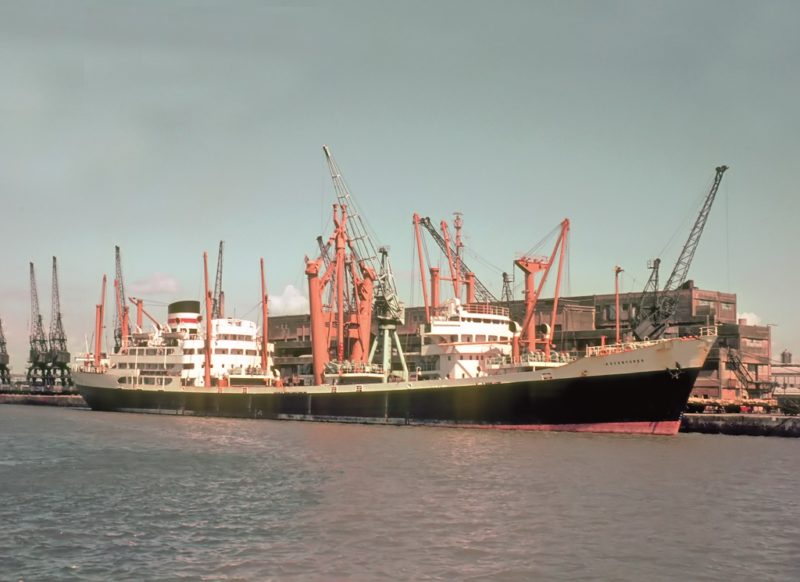
POST-WAR TRADING
The gaps in the fleet were plugged by ten standard ‘Liberty’ types, and six ‘Empire’ types with some of them having been managed during the war by Harrisons.
The war survivor Strategist of 1937 had her passenger accommodation removed in 1945, and was loading cargo in Millwall Dock on the Thames in October 1948, the other London docks used by Harrisons being the adjacent West India Docks. Strategist was sold to Hansa Line in March 1957 and renamed Schonfels and arrived for breaking up at Hong Kong on 15th May 1963. Harrison berths were later transferred to the Royal Docks in London until the late 1970s.
The preferred type of propulsion in post-war years was diesel engines via four, five or six cylinder single acting Doxford opposed piston diesel engines giving 14 to 17 knots on trials and 12 to 16 knots service speed.
Some 21 examples of motor ships were completed starting with Herdsman in 1947, with guarantee dry docking usually done at Greenwell Dry Docks in Sunderland harbour, but if they were fully booked then Smith’s Dock Co. Ltd. at North Shields did the final spruce up.
Governor (4) in December 1952 dry docked at North Shields before doing her speed trials on the Newbiggin Measured Mile and sailing on her maiden voyage from London to the Continent and South Africa. The 17 motorships built by Doxfords for the company were:-
Name Yard Year
Maiden Voyage
- Herdsman 739 1947 – London and the Continent to South Africa
- Interpreter 747 1948 – Liverpool to Galveston
- Astronomer 785 1951 – Liverpool to the West Indies
- Wayfarer 786 1951 – Liverpool to Jamaica and Mexico
- Wanderer 790 1951 – London and Antwerp to South Africa
- Arbitrator 791 1951 – Liverpool to East Africa
- Governor 793 1952 – London and the Continent to South Africa
- Diplomat 794 1953 – London and the Continent to South Africa
- Journalist 801 1954 – Birkenhead to East Africa
- Barrister 802 1954 – Liverpool to the West Indies
- Defender 809 1955 – Liverpool to East Africa
- Administrator 826 1958 – Liverpool to the West Indies
- Author 827 1959 – Liverpool to the West Indies
- Plainsman 835 1959 – Liverpool to Jamaica and Mexico
- Adventurer 834 1960 – Liverpool to the West Indies
- Custodian 844 1961 – Birkenhead to East Africa
- Tactician 845 1961 – Liverpool to Jamaica and Mexico

Calls were also made at Plantation Quay in Glasgow to load upwards of two thousand tonnes of cargo, before completing loading on Merseyside for the West Indies. There were a few examples of cargo-liners with the traditional triple expansion steam reciprocating engines boosted by a low pressure double reduction geared turbine with hydraulic coupling, examples being Craftsman (4), Linguist (2), and Biographer from Lithgows at Port Glasgow, and Crofter and Forester from the John Readhead yard at South Shields. Crofter represented Harrisons at the Coronation Review at Spithead on 15th June 1953, and was bedecked with flags from her fo’c’stle jack to the tops of her foremast and mainmast and down to her ‘Red Duster’ on the poop. Crofter had also during her maiden voyage in February 1952 towed the disabled fleetmate Explorer from mid Atlantic for four days to Port of Spain in Trinidad, a distance of 800 miles and strained her not yet run in engines in the process.
The Admiralty type cowl tops to the funnels were dispensed with in 1949 following the introduction of motorships whose propulsion did not require the inner casing. The work was spread over several months and when undertaken the funnels were shortened and given a sloping top to modernise them. The first real profile change for forty years in Harrison’s cargo-liners was made in 1951 with the appearance of Astronomer (4) in March 1951. She was a shelter decker with three hatches before her navigating bridge and two hatches aft, with the next fifteen ships adopting her profile to give a fleet of 41 ships of 287,484 grt in 1954 with two more vessels under construction. Administrator of 9,570 dwt built in 1958 of the four vessel Defender class was given twin 70 ton heavy lift derricks, the topmasts of all these post-war vessels were removed at Eastham for the transit of the Manchester Ship Canal and then replaced when they moved back into the Mersey. Harrison Line ships began to load at Manchester for Calcutta in 1920, Senator of 1917 being the first ship on the berth.
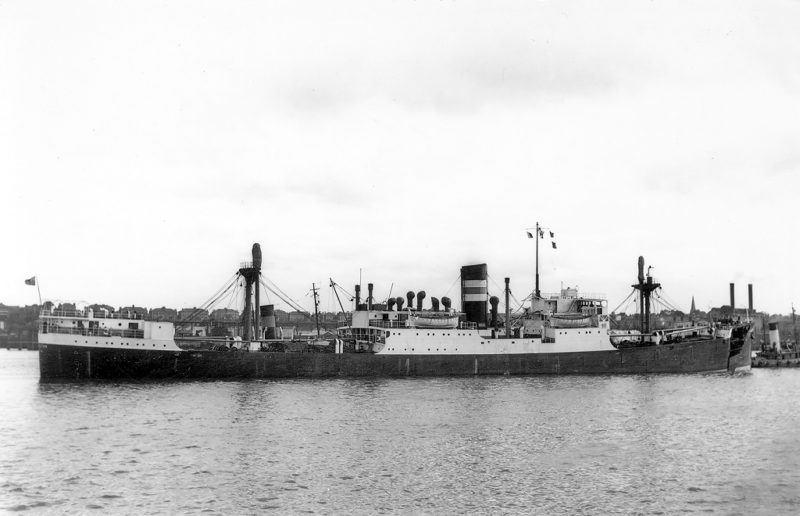
In post-war years, under the Chairmanship of Sir Thomas Harrison Hughes (1881-1958), and later Patrick Wilson, the company consolidated its existing West Indian and South African trades after leaving the Calcutta Conference in 1955. Sir Thomas Harrison Hughes, however, maintained the close traditional links with the Suez Canal by serving as Vice President of the Suez Canal Company in 1954. Under his direction, the company made a brief foray into the world of Flags of Convenience by registering two vessels under the Ruthin Steamship Company of Hamilton in Bermuda. Administrator and Author (4) of 1958/59 cost £1.2 million to build and were still registered in Liverpool and flew the ‘Red Duster’.
Capt. J. Stocks was the company Marine Superintendent at this time, with J.H. Beazley as Superintendent Engineer. Harrison charters at this time in 1957 included Pacific Northwest built in 1954 of Furness, Withy & Co. Ltd. on the run to the Panama Canal and Central American Pacific ports, and Woldingham Hill built in 1943 of Counties Ship Management Co. Ltd. on the Barbados, Trinidad, Demerara, Windward Islands and Leeward Islands, La Guaira, Puerto Cabello, Curacao and Maracaibo run.
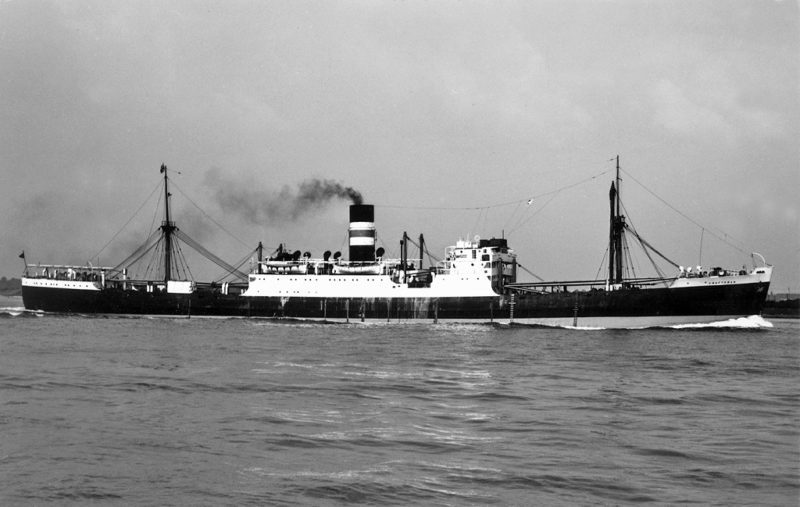
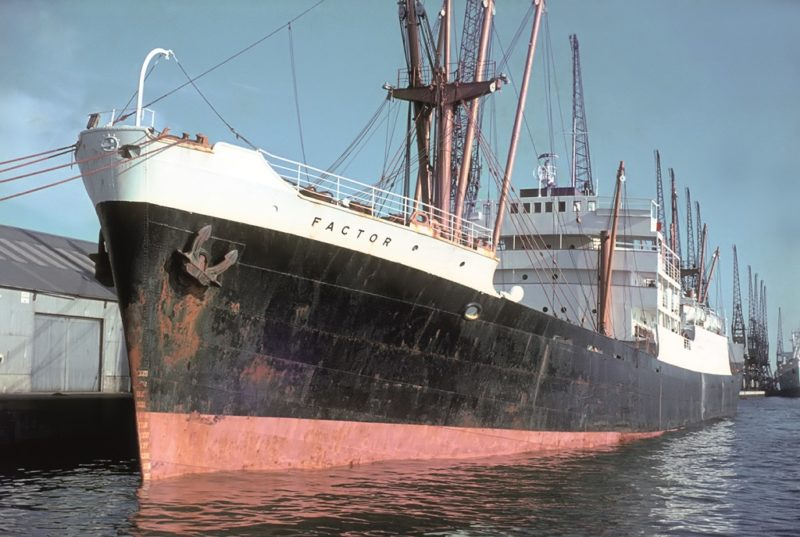
Adventurer of 10,900 dwt introduced a new look into the fleet in 1960 before the advent of bulk carriers and container ships changed the world of cargo-liners irrevocably forever. She inaugurated the new Harrison berth at South Canada 2 Branch Dock at Liverpool on 2nd December 1963, and was one of three examples of ‘engines aft’ Doxford built ships equipped with Stulcken heavy lift derricks at number three hold with a 150 ton Stulcken derrick, the others being Custodian (3) of February 1961 and Tactician of June 1961 with 110 ton Stulcken derricks. Adventurer had five holds and five hatches with seven bulkheads, an overall length of 490.3 feet, moulded beam of 65.3 feet, depth of 37.9 feet and loaded draft of 29.0 feet, a fo’c’stle of length 38 feet and a poop of length 72 feet. She had a cubic capacity of 610,270 cubic feet, and carried 3,438 tons of water ballast for ballast voyages, including water in the tunnel tanks and deep tank. Apart from the heavy lift jumbo derrick, she also was equipped with four 15 ton, four 10 ton, eight 5 ton and one 3 ton derrick, with a six cylinder Doxford opposed piston diesel engine of 6,900 bhp throbbing in her rivetted and welded hull, and with four generators for electrical power generation.
Custodian (3) and Tactician were exact sisters, two feet shorter and three feet less wide than Adventurer, with an uprated Doxford diesel of 8,000 bhp but still with four electrical generators, and they carried 3,212 tons of water ballast for ballast voyages including in the tunnel tanks and deep tank. They had five holds and five hatches, and as well as a jumbo heavy lift derrick, they were equipped with four 15 ton, four 10 ton, six 5 ton derricks and a five ton electric crane. The aft tunnel side tank spaces were used to carry vegetable oils, and in addition to two complete decks there was a third deck in numbers 1 and 2 holds.
The similar Inventor (4) followed from the Scotstoun yard of Connell in May 1964 with five holds and hatches, seven electric cranes, five derricks as well as her 150 ton Stulcken jumbo derrick. This group of four ships were well used in transporting heavy lifts e.g. oil mooring buoys from Rotterdam to Bonny in Nigeria, or transformers, stators and rotors of power station turbines to Port Elizabeth in South Africa. Inventor was disabled off Cape Agulhas on 28th December 1965 after her main engine failed, and she was held firm by two anchors for 45 hours until temporary repairs were completed.
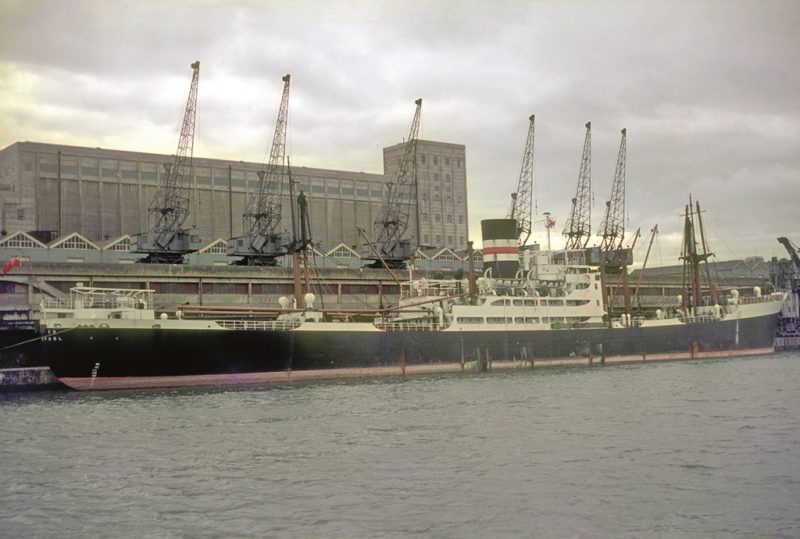
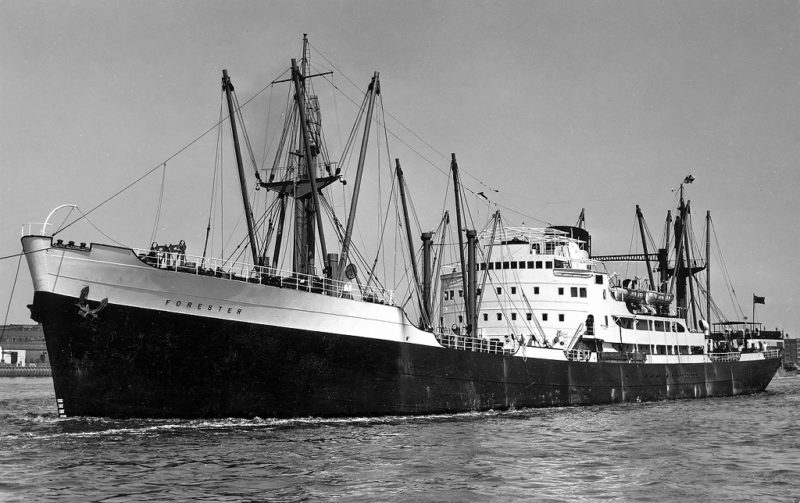
Harrisons gave British shipyards no favours by next giving two orders to the Netherland Dok yard in Amsterdam for Explorer (4) and Dalesman (2) of 8,850 dwt for delivery in 1961. Sulzer diesel engines instead of Doxfords propelled them at a service speed of 15.5 knots, but they were not equipped with jumbo Stulcken derricks, instead they were given a pole heavy lift derrick at number two hold. Dalesman (2) arrived at Corunna on fire in number 2 lower hold on 19th November 1965, with the great efforts of Chief Officer Tony Billington wearing breathing apparatus putting out the fire with high pressure water jets. Dalesman (2) was soon repaired for her next voyage to the Caribbean, with her sister Explorer (4) suffering slight damage to her stern when struck by the small Swedish ship Verona in the Thames on 21st September 1966.
The Harrison fleet of 34 cargo-liners in 1964 declined to one of thirty vessels in 1967, even though five new smaller vessels of the ‘Discoverer’ class of 7,725 dwt were completed by the Lindholmens yard in Gothenburg in 1964/65, followed by the very similar Trader (2) and Linguist (3) of 7,925 dwt in 1966 from the same yard, each with 70 ton Stulcken derricks. A rather complicated transaction was made by Harrisons in 1969 by the charter for 19 years of two engines aft cargo-liners of 7,662 dwt from Cunard Line renamed as Merchant (4) and Scholar (4) in 1964 to serve on the West Indies and Central American trades for over a decade. The final flourish of the design of Harrison cargo-liners was made during the end of 1968 to February 1972 with a trio of ships from the Doxford yards at Sunderland. Sisters Magician (3) and Historian (5) of 11,100 dwt were equipped with a single 150 ton Stulcken derrick, while Craftsmen (5) of 9,500 dwt was equipped with twin 250 ton Stulcken derricks to make possible tandem lifts of 500 tons at number three hold using spreader bars to handle very heavy lifts. She had the biggest heavy lift capacity in the world at the time of her delivery.
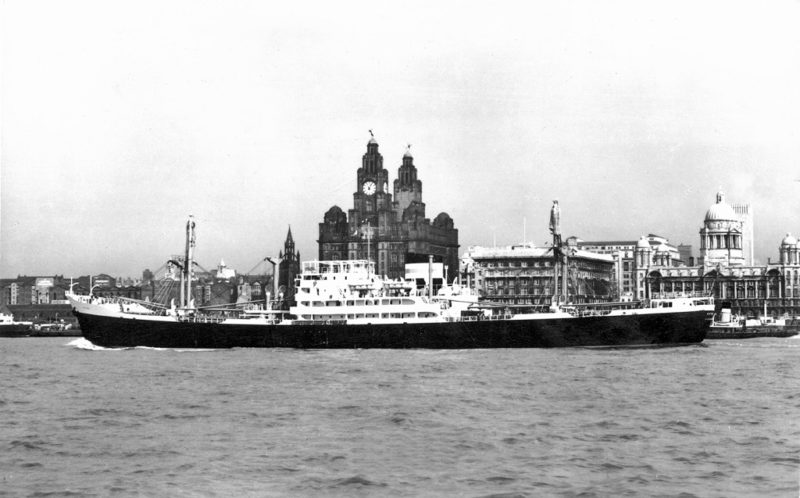
In 1966, Harrisons were a founder member of the Associated Container Transportation (ACT) new container line serving Australia and New Zealand from Europe. Members were Ben Line, Blue Star Line, Cunard, Ellerman and the Charente Steam Ship Co. Ltd., and the first sailing was taken by container ship ACT1 on 22nd March 1969. Container ships named from ACT1 to ACT12 voyaged to the Antipodes over the next two decades until the early 1990s, when Blue Star Line acquired the service and renamed some of the container ships with their traditional ‘Star’ suffix nomenclature.

A five hold cargo-liner of 16,760 dwt as a closed shelter decker was purchased from the Lyras family of Greece for $7.5 million and renamed Benefactor (2) in September 1970, one of eight sister Doxford standard design ships, some of which were pole masted. However, the Harrison partners wished to take the company in a different direction in 1973 with the delivery of three Japanese built bulk carriers of 27,570 dwt completed as Wayfarer (4), Wanderer (4) and Warrior (4) for worldwide voyage charters and long term charters, followed by two Supramax bulkers of 60,922 dwt from the Burmeister & Wain yard at Copenhagen in 1975 as Specialist (3) and Strategist (2).
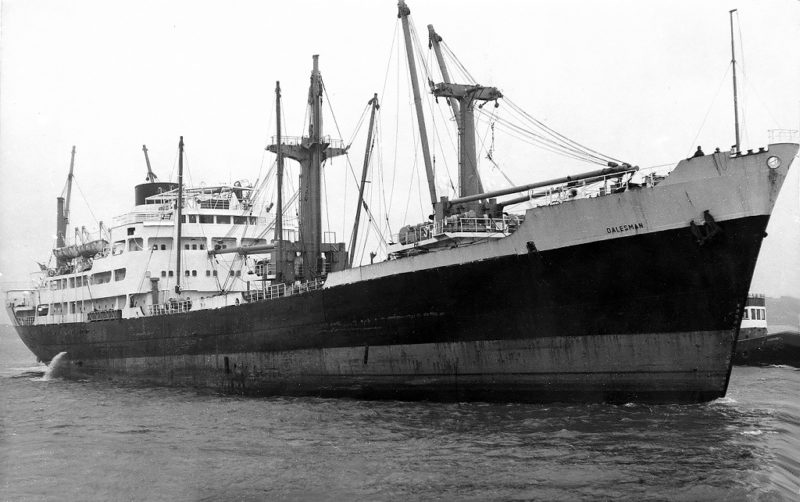
A large fleet of two dozen Harrison cargo-liners and five Harrison bulk carriers was being looked after in 1975 by Marine Superintendent Capt. R. H. Douglas and Superintendent Engineer E. Levison. Specialist sailed from Bremerhaven on 17th October 1978 for Key West, while Strategist loaded on the Rio Grande at the same time for Rotterdam with a call at Freetown for bunkers. Specialist sailed from Kobe for Los Angeles in January 1982, while Strategist was also used in the same Pacific trades from Yokohama at that time. Strategist was sold in July 1983 to Bridgeworth Ltd., a member of the British & Commonwealth Shipping Group and renamed Barnworth. She became the Greek owned Agios Minas in 1991, and was loading grain at Vancouver on 21st September 1995, and carried on in the world bulk trades until beached at Alang on 13th September 2003 for breaking up. Specialist was sold to Greek owners in 1983 and had a similar long career until her arrival at Alang for breaking up on Christmas Day 1999. The ‘W’ class bulkers were sold by Harrisons during 1987/89 for further service and continued in world trade until demolition in 1999.
The traditional general cargo trades to the West Indies were containerised in 1976 by the new CAROL (Caribbean Overseas Lines) services from Europe to the West Indies, with investment made in six identical B463 type container ships of 1,416 TEU capacity and built in Poland, as well as shore gantry cranes by a consortium of Harrisons, Hamburg Amerika Line, K. N. S. M. of Holland, and French Line. Caribia Express of Hapag took the first CAROL sailing from Hamburg in December 1976, while Astronomer of Harrisons took the second sailing from Seaforth Dock in Liverpool in February 1977. The second Harrison container ship Adviser (2) followed in October 1977 and the third Harrison container ship Author (4) in December 1980, to join Cordillera Express of Hapag and Hollandia of K. N. S.M. in a fleet of eight exact sisters There were up to eight European loading ports for CAROL, with calls at Bridgetown (Barbados), Port of Spain (Trinidad), Willemstad (Curacao), Oranjestad (Aruba), Kingston (Jamaica), San Juan (Puerto Rico), Rio Haina (Dominican Republic), Port au Prince (Haiti), Santo Tomas de Castilla (Guatemala) and Puerto Cortes (Honduras) with feeder services to lesser ports such as Belize. Author was sold in 1981 after only a few months of service to Barclays Mercantile Industrial Finance and chartered to Ben Line as Benarmin with Harrison Line remaining as managers.
The conventional general cargo services of Harrison out of Glasgow and Liverpool in 1978 were operated in conjunction with Cia Anon Venezolana when Venezuela was the terminus, and with Flota Grancolombiana when Colombia was the final destination. Harrison was thus only allowed one third of the number of ships trading to these destinations. The Harrison conventional ships trading in October 1978 were on the following voyages:-
- Adventurer – Sailed Liverpool 4th September for Puerto Cabello and Maracaibo
- Benefactor – Arrived Tees 16th October from Maputo
- Craftsman – Arrived Liverpool 21st October from Mombasa
- Custodian – Sailed New Orleans 15th October for the U.K.
- Dalesman – Sailed Liverpool 20th October for Houston
- Explorer – Sailed Vera Cruz 11th October for Belize and Manchester
- Historian – Sailed Liverpool 1st October for Barbados and Venezuela
- Inventor – Sailed Liverpool 23rd October for Tampico and Barranquilla
- Linguist – Sailed Liverpool 6th October for Houston
- Magician – Arrived Tyne 29th September to dry dock and load for the West Indies
- Merchant – Sailed Hamburg 13th October for Amsterdam and Fort de France
- Plainsman – Sailed Glasgow 2nd October for Liverpool and Nacala
- Scholar – Arrived Liverpool 13th October from Santana (Amazon)
- Tactician – Sailed Dar-es-Salaam 18th October for Nacala and the U.K.
- Trader – Sailed New Orleans 8th October for Manchester

The Harrison conventional ship Magician (3), having suffered fire damage in the galley at La Guaira in Venezuela in July 1979, was sold off with her sister Historian (5) in May 1981 to the same Singapore owners and renamed Cherry Crystal and Cherry Orient for four more years of trading before they were broken up. The last two conventional Harrison cargo-liners in service were Craftsman, sold on 16th November 1981 to Greek owners and renamed Forum Craftsman, and Benefactor, which sailed from Liverpool and Glasgow to Maracaibo in mid December 1981 and was sold on 16th April 1982 to Chilean owners and renamed Southern Lady.
Harrisons were founder members in 1981 of the BEACON consortium (British and European Shipping Lines Joint Container Service) with regular services between Europe and the Red Sea, East Africa and Mauritius. Harrisons also rented container slots on the member’s ships of the new SAGUMEX (South Atlantic, Gulf and Mexico Line) service in July 1980, with a weekly service from Rotterdam, Bremerhaven, Le Havre and Greenock to Miami, New Orleans and Houston. A single ship container consortium was founded in 1985 as Ellerman-Harrison Container Lines for services to South Africa. Harrisons had a one third share in the container ship City of Durban delivered in February 1978 by the A. G. Weser yard at Bremen with a capacity of 2,436 TEU of containers. She wore Ellerman Line colours and was managed and operated by Ellermans, and was placed on long term charter to Associated Container Transportation (ACT) in July 1985 for their twice monthly Europe to Australia and New Zealand service.
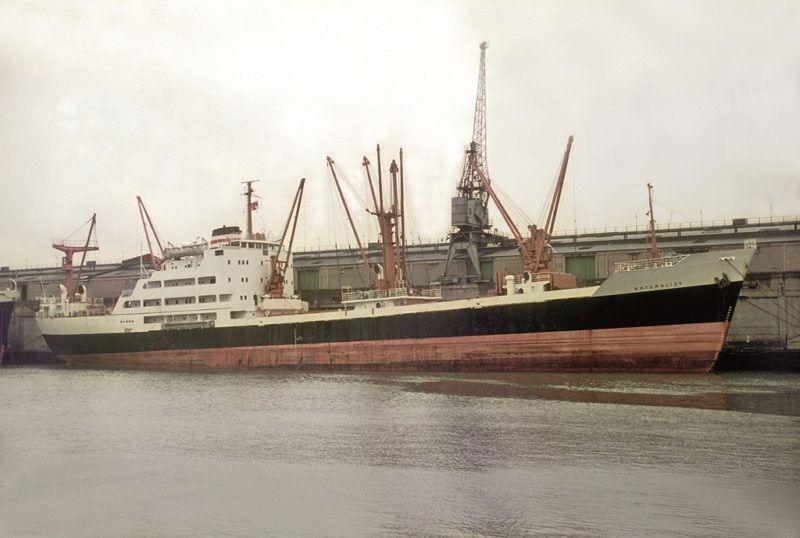

HARRISONS AND WEST INDIAN WORKERS
The Harrison fleet at the turn of the century in 1900 was 30 steamers of 138,867 grt, and had grown to 40 steamers of 203,848 grt by 1907. The total number of seafarers crewing the ships in 1907 was 1,900 men with European Masters, navigation and engineer officers, and Indian Lascars and Caribbean men. Colonial labour from Barbados and other British Caribbean islands were used as seafarers and as dockers on Liverpool waterfront by Harrisons, and they were charged and had deducted from their wages the cost of their clothes, boots and tobacco. These deductions from wages were a contravention of the Truck Act Amendments of 1905, which required that the entire amount of the wages must be paid to the employee. The Truck Acts addressed the issues of ‘company stores’ and ‘debt bondage’ that kept employees in permanent debt to their employers.
West Indian workers rose from the ninth biggest national contingent on British ships in 1900 to the sixth biggest in 1911. This increased enormously during the Great War, and the last year of 1918 saw 5,624 West Indian seamen engaged or discharged in Barbados alone. Harrisons had a contract from 1870 to 1880 to carry indentured ‘coolie’ labour from Calcutta to the sugar plantations of Demerara, Trinidad, Barbados and Guadeloupe. Return cargoes were readily available to the U.K. of sugar, molasses and rum, with a loyal network of Harrison agents linking shipping routes and ports throughout the Caribbean.

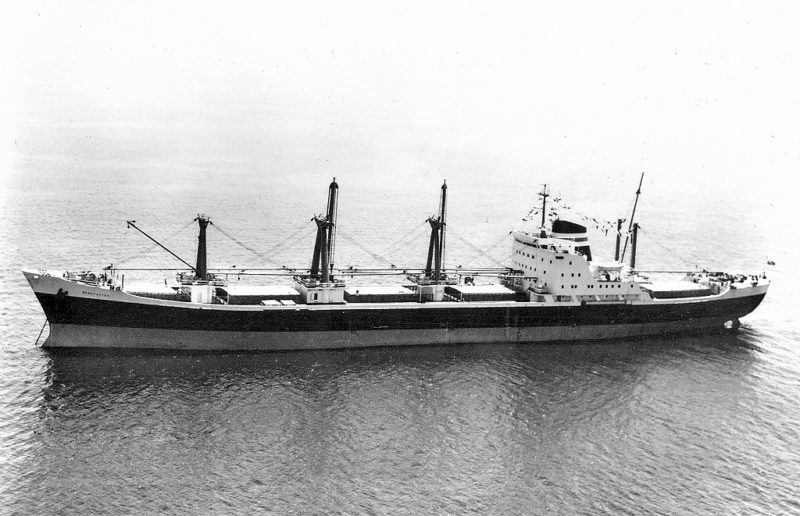
Harrisons were keen to take advantage of cheap labour wherever possible, with some labour taken on unofficially to help with the loading and discharging of cargo. Two or three Harrison vessels had Barbadian crews on scheduled services between Liverpool and Barbados, particularly on coal burners as white engine room crews could not shovel coal in the tropics at the same rate as Caribbean stokers. During World War II, there were 1,800 non-white men from the Caribbean ready and willing to serve on British merchant ships, and during 1942 68 Barbadian seamen were killed and 170 had been repatriated after their ships were sunk by enemy action, Inkosi, later Empire Chivalry, having 25 West Indian seamen engaged from 9th February 1940 to the end of hostilities.
In 1946, one of the Harrison directors visited Barbados and stated that it was the intention of his firm to continue to engage crews at Barbados for a certain number of their ships, and at the same rates of pay as British seamen. Harrisons engaged and discharged crews at Barbados for their ships passing through the Caribbean, with 345 West Indian seamen from Barbados serving at sea by the end of 1950 in Harrison ships, their wages being over one million Barbadian dollars per annum between 1951 and 1956. It was estimated that at least two dozen of Harrison ships were crewed entirely by men recruited in Barbados by the end of 1956, with white Masters and officers. Planter and Explorer were altered so that they had sufficient accommodation to carry a complete extra crew on each voyage, in order to repatriate Barbadian crews at the end of their contracts.
By the end of the 1950s, every ship of the Harrison fleet was crewed by West Indians recruited in Barbados, however this number fell dramatically with the change in direction in 1973 to bulk carriers and to container ships shortly afterwards. Barbados had been a major destination for slave ships from Africa for two centuries, with social tensions flaring on the island in the 1920s and 1930s, leading to the black majority gaining access to the political system. Tourism later improved the lot of the islanders and they gained self determination for all of the community (95% black and 5% white), with independence granted from the U.K. in 1961. The severe racial riots in the U.K. after the arrival of Empire Windrush, the former German liner Monte Rosa, in June 1948 from Kingston (Jamaica) at Tilbury, and subsequent waves of immigrants from the West Indies, were not seen on Merseyside in the early part of the century when Harrisons used West Indian workers as dockers.
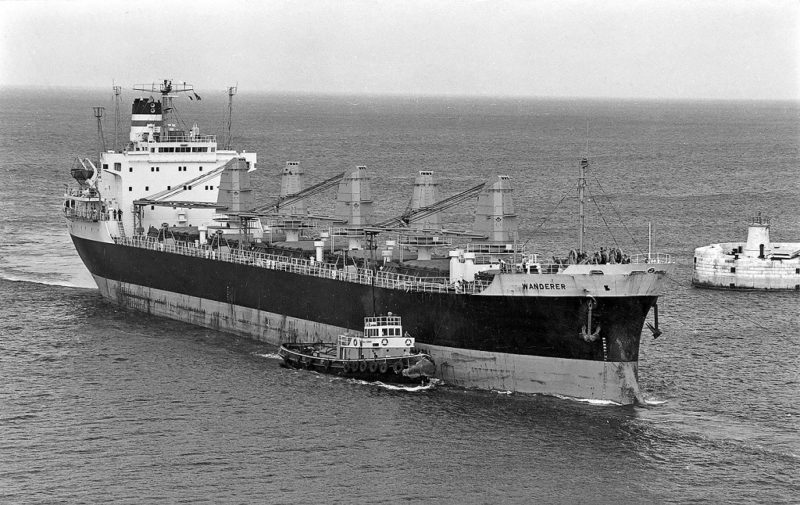
HARRISON LINE FINALE
Unfortunately, 85 seafarers out of a seagoing staff of 300 were made redundant in 1983 due to the sharp drop in size of the Harrison Line fleet. The first Harrison container ship Astronomer had been taken over in May 1982 and converted into a helicopter base ship for the Falklands War naval fleets, and was renamed Reliant as a Royal Fleet Auxiliary. Two bulk carriers from a subsidiary of Charles Connell & Company joined the Harrison fleet as Lamma Forest and Lantau Trader of around 29,000 dwt for worldwide trading for eight years until sold off in 1990. Six bulk carriers of Crossfish Ltd. of Hong Kong of up to 30,000 dwt were managed by Harrisons between 1984 and early 2002 named Pisces Pioneer, Pisces Planter, Pisces Voyager, Pisces Trader, Pisces Explorer and Pisces Venturer. Multi purpose container ships were chartered from Ahrenkiel and Oldendorff of Germany and renamed Barrister at different times to give a managed fleet of around ten ships in the early 1990s and four ships in 1998.
The Head Office of Harrisons continued to be at Mersey Chambers in Liverpool, with a London office at Devonshire Square, until the need for such grandiose accommodation was no longer required. The container ship Westerhamm of 2,064 TEU capacity, built in 1998 by Stocznia Gdynia in Poland under the German flag, was chartered for two years in 1999 for the Caribbean trade and renamed Actor (3) as one of the last Harrison ships. She sailed from Hamburg on a three month round voyage with calls at Rotterdam, Felixstowe, Le Havre for Ponce (Puerto Rico), Bridgetown (Barbados), Port of Spain (Trinidad), Willemstad (Curacao), Oranjestad (Aruba), Kingston (Jamaica), San Juan (Puerto Rico), Rio Haina (Dominican Republic), Port au Prince (Haiti), Santo Tomas de Castilla (Guatemala) and Puerto Cortes (Honduras) with feeder services to lesser ports such as Belize.
Actor (3) arrived back in Europe in November 2000 at the end of her last voyage, and all of the trades of the Charente Steam Ship Co. Ltd. were relinquished at that time, and all rights and privileges were transferred to P. & O. Nedlloyd.
The Charente Group was renamed as Harrison Logistics as the parent of a diverse group of shipping, forwarding, warehousing, and logistics businesses, and the owner of two bulk carriers of Crossfish Ltd. In January 2002, Harrison Logistics went into voluntary liquidation, and Mersey Chambers was closed.
The contents including many paintings, 31 ship models, and company possessions of all kinds were cleared at the end of 2002, and the precious company records were donated to Merseyside Maritime Museum. An auction by Bonhams in Knightsbridge in London on 4th March 2003 saw 233 lots of Harrison memorabilia sold for high prices.
Harrisons would have celebrated their 150th year in business, but the great Liverpool shipping company begun in 1853 by Thomas Harrison and James Harrison was very sadly no more.
The black funnel colours with central bands of ‘two of fat and one of lean’ would be seen no more. The business continued with other interests as Charente Ltd., notably with the sale of nautical instruments and charts, and other businesses well outside of the maritime sphere.
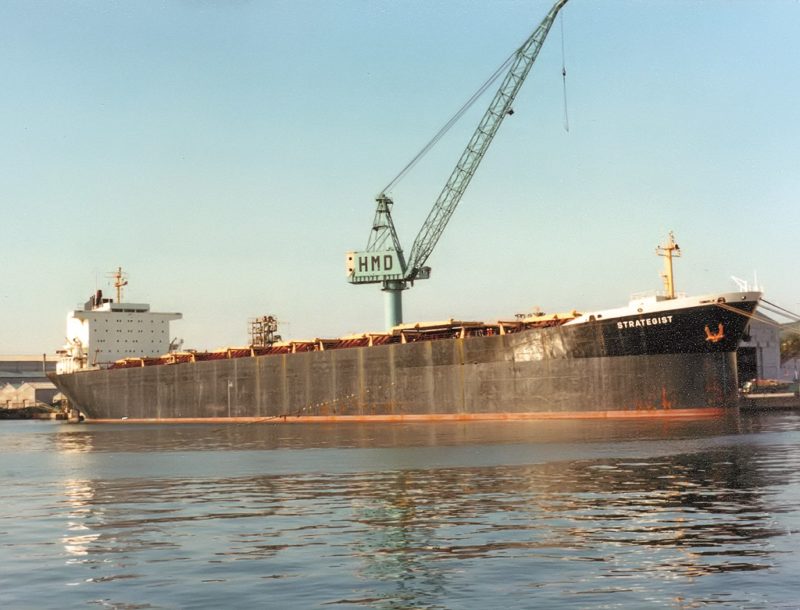

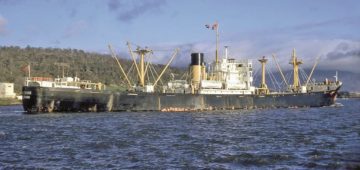



Comments
Sorry, comments are closed for this item